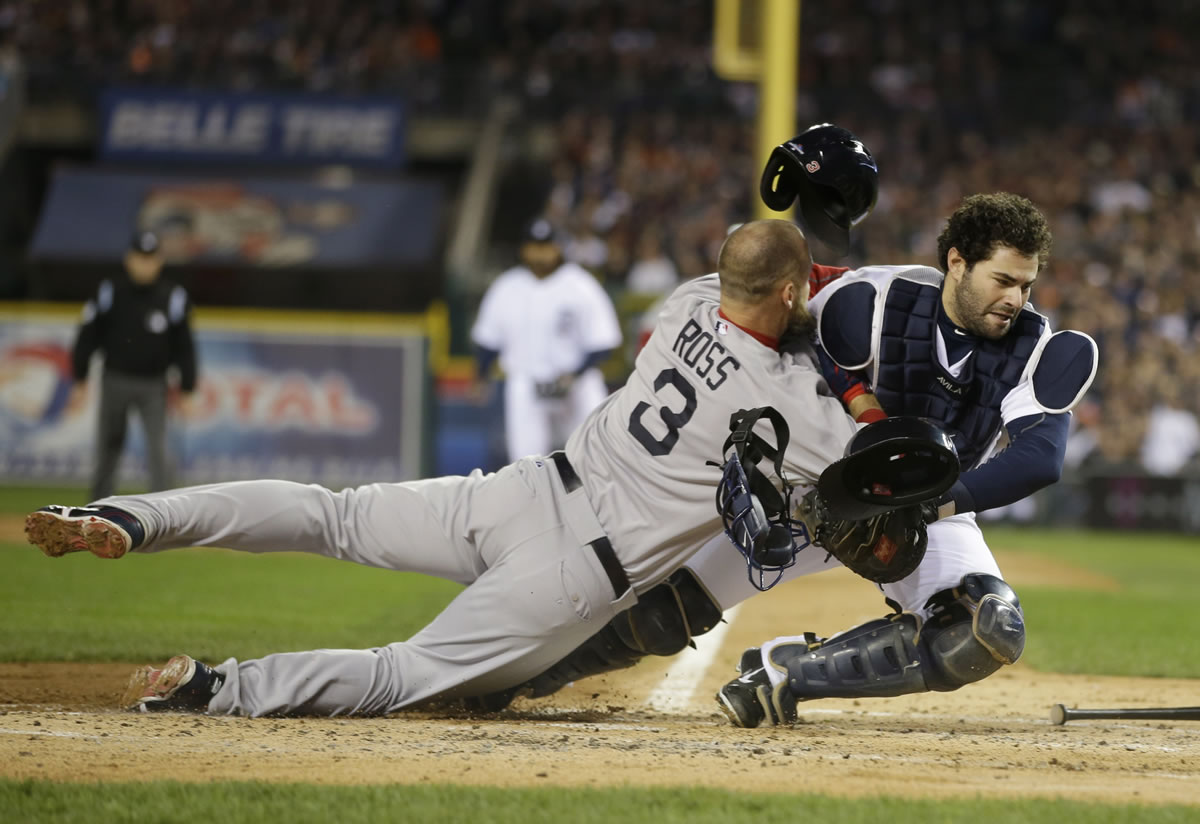It’s a well-known truth in sports. When someone says it’s not about the money, it’s in fact about the money.
So give baseball executives credit for being truthful last week. The effort to ban collisions at home plate is largely to protect their multi-million-dollar investments in superstar catchers.
As soon as next season, a baserunner will not be allowed to run over the catcher, who in turn will not be allowed to block home plate.
It’s the latest change in a major sport under the guise of player safety.
But let’s not kid ourselves. Money holds the rope that is pulling professional sports in this direction.
The tension in that rope, the resistance to change, provides what might be the defining debate of this sports era — How much do we safety-proof games that draw popularity from their inherent danger?
It’s a great debate in which both sides have merit. Money has simply raised the urgency and passion.
Football has gotten most of the attention. Its concussion crisis has led to $765 million settlement and a slew of limits on hits.
There’s plenty of gray areas in football’s quest to protect players’ gray matter. Its players undoubtedly suffer life-altering punishment on a yearly basis.
Baseball’s motives are more blatantly financial. There was never a serious push to limit home-plate collisions before catchers began earning superstar salaries.
Minnesota’s Joe Mauer is less than halfway through a $184 million, eight-year contract. He played only 75 games at catcher last season due to concussions. Buster Posey is making $167 million over nine years. A broken ankle suffered in a collision at home plate ended his 2011 season.
“It’s a great change. We protect our assets,” Angels general manager Jerry Dipoto told reporters at baseball’s winter meetings.
Not everyone agrees.
Former Major League catcher Tom Lampkin, who coaches Union High School’s baseball team, bristles at the idea of taking that element out of the game.
“Injuries are part of the game,” Lampkin said. “We assume that going in.”
Lampkin knows of what he speaks. He was involved in several collisions over a 13-year Major League career that ended in 2002. He says foul tips to the facemask pose a much bigger risk to catchers, but nobody is talking about eliminating those.
“In spring training, we spent days learning how to block the plate,” Lampkin said. “You’re taught a basic way to absorb contact.”
During his early years in the majors, Lampkin remembers veterans Jack Clark, Fred Lynn and Joe Carter bemoaning changes they thought watered down the way baseball was traditionally played.
“It’s OK to make adjustments. We have to,” Lampkin said. “But is eliminating that part of the game the answer? I don’t think so.”
Sports must evolve. As players grow faster and stronger, safety must be paramount.
But let’s not kid ourselves. To find what’s driving these changes, follow the money.




